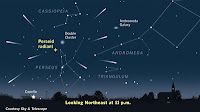Asteroid 2012 NP passed by the Earth at a distance of 15 150 000 km (39.4 times the average distance between the Earth and the Moon, or 10.1% of the average distance between the Earth and the Sun), slightly after 12.05 pm GMT on Wednesday 12 August 2015. There was no danger of the asteroid hitting us, though had it done so it would have presented a considerable threat. 2012 NP has an estimated equivalent diameter of 100-330 m (i.e. it is estimated that a spherical object with the same volume would be 100-330 m in diameter), and an object of this size would pass through the atmosphere and directly impact the ground with a force of about 38-1500 megatons (roughly 2235 to 88 000 times the explosive energy of the Hiroshima bomb), causing devastation over a wide area and creating a crater about 1.2-5.0 kilometers across, and resulting in global climatic problems that could last for decades or even centuries.
The calculated orbit of (242191) 2003 NZ6. JPL Small Body Database.
2012 NP was discovered on 13 July 2012 by the Massachusetts Institute of Technology's Lincoln Near Earth Asteroid Research Laboratory in Socorro, New Mexico. The designation 2012 NP implies that it was the 15th asteroid (asteroid P) discovered in the first half of July 2012 (period 2012 N).
2012 NP has a 1101 day orbital period and an eccentric orbit tilted at an angle of 7.36° to the plane of the Solar System that takes it from 1.10 AU from the Sun (i.e. 110 % of the average distance at which the Earth orbits the Sun) to 3.07 AU from the Sun (i.e. 3.07% of the average distance at which the Earth orbits the Sun, slightly over twice the distance at which the planet Mars orbits). It is therefore classed as an Amor Group Asteroid (an asteroid which comes close to the Earth, but which is always outside the Earth's orbit). This means that close encounters between the asteroid and Earth are fairly common, with the most recent having occurred in July 2012 this year next predicted in August 2018.
See also...
The Perseid Meteor shower lasts from late July to early September each year, and are expected to be at a peak on 12-13 August 2015, which falling slightly before the new moon of 14 August, should mean viewing...
Asteroid 2015 NA14 passed by the Earth at a distance of 9 099 000 km (23.7 times the average distance between the Earth and the Moon, or 6.08% of the average distance between the Earth and the Sun), at about 6.05 pm GMT on Friday 31 July 2015. There...
Asteroid 2015 OQ21 passed by the Earth at a distance of 567 900 km (1.48 times the average distance between the Earth and the Moon, or 0.38% of the average distance between the Earth and the Sun), at about midnight GMT between Thursday 23 and...
Follow Sciency Thoughts on Facebook.




